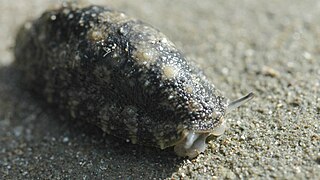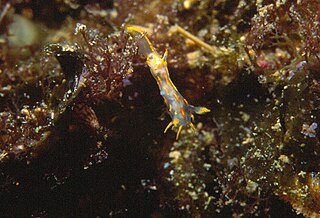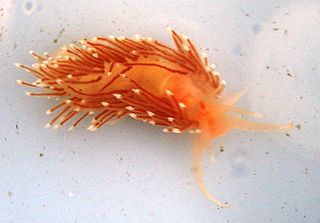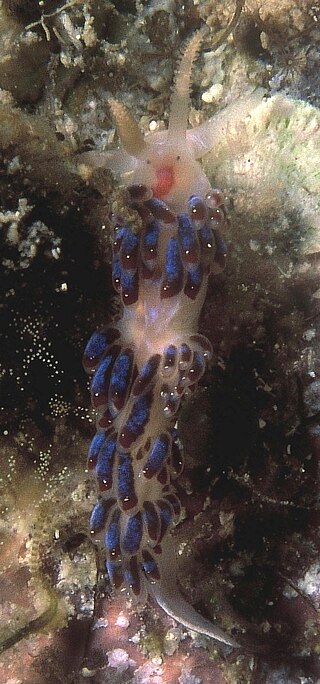
Cephalotus is a genus which contains one species, Cephalotus follicularis the Albany pitcher plant, a small carnivorous pitcher plant. The pit-fall traps of the modified leaves have inspired the common names for this plant, which also include Western Australian pitcher plant, Australian pitcher plant, or fly-catcher plant. It is an evergreen herb that is endemic to peaty swamps in the southwestern corner of Western Australia. As with the unrelated Nepenthes, it catches its victims with pitfall traps.

Pinguicula moranensis is a perennial rosette-forming insectivorous herb in the flowering plant family Lentibulariaceae. It is native to El Salvador, Guatemala, Honduras and Mexico. A species of butterwort, it forms summer rosettes of flat, succulent leaves up to 10 centimeters (4 in) long, which are covered in mucilaginous (sticky) glands that attract, trap, and digest arthropod prey. Nutrients derived from the prey are used to supplement the nutrient-poor substrate that the plant grows in. In the winter the plant forms a non-carnivorous rosette of small, fleshy leaves that conserves energy while food and moisture supplies are low. Single pink, purple, or violet flowers appear twice a year on upright stalks up to 25 centimeters long.
A biological system is a complex network which connects several biologically relevant entities. Biological organization spans several scales and are determined based different structures depending on what the system is. Examples of biological systems at the macro scale are populations of organisms. On the organ and tissue scale in mammals and other animals, examples include the circulatory system, the respiratory system, and the nervous system. On the micro to the nanoscopic scale, examples of biological systems are cells, organelles, macromolecular complexes and regulatory pathways. A biological system is not to be confused with a living system, such as a living organism.

Onchidiidae are a family of small, air-breathing sea slugs. They are shell-less marine pulmonate gastropod molluscs. Onchidiidae is the only family within the superfamily Onchidioidea.

Le Croisic is a commune in the Loire-Atlantique department, western France. It is part of the urban area of Saint-Nazaire.

The Facelinidae are a taxonomic family of colorful sea slugs. These are specifically aeolid nudibranchs. They are marine gastropod molluscs.

Polycera quadrilineata, is a sea slug, a species of dorid nudibranch. It is a marine gastropod mollusc in the family Polyceridae. The specific epithet quadrilineata means four-lined and refers to the four longitudinal black lines present on the original specimen. This species is sometimes called the fourline nudibranch. In 2020 a integrative molecular and morphological study showed that P. quadrilineata was a complex of two species in the NE Atlantic and one of these species was given the new name Polycera norvegica.

Facelina bostoniensis is a species of sea slug, an aeolid nudibranch in the family Facelinidae.

Facelina is a genus of sea slug, an aeolid nudibranch in the family Facelinidae.

Saniwa is an extinct genus of varanid lizard that lived during the Eocene epoch. It is known from well-preserved fossils found in the Bridger and Green River Formations of Wyoming, United States. The type species S. ensidens was described in 1870 as the first fossil lizard known from North America. A second species, S.orsmaelensis, is recognised from remains found in Europe. It is a close relative of Varanus, the genus that includes monitor lizards.
Orienthella fogata is a species of sea slug, an aeolid nudibranch, a marine gastropod mollusk in the family Flabellinidae.

Piseinotecus soussi is a species of sea slug, an aeolid nudibranch, a marine gastropod mollusc in the family Piseinotecidae.
Paraflabellina gabinierei is a species of sea slug, an aeolid nudibranch, a marine gastropod mollusk in the family Piseinotecidae.

Myja longicornis is a species of sea slug, an aeolid nudibranch, a marine gastropod mollusc in the family Tergipedidae. It was thought to be a close relative of Tergipes but molecular phylogeny reveals it to be a paedomorphic facelinid.
Caloria quatrefagesi is a species of sea slug, an aeolid nudibranch, a marine gastropod mollusc in the family Facelinidae.
Pruvotfolia pselliotes is a species of sea slug, an aeolid nudibranch, a marine gastropod mollusc in the family Facelinidae.
Facelina hartleyi is a species of sea slug, an aeolid nudibranch, a marine gastropod mollusc in the family Facelinidae.
Spurilla croisicensis is a species of sea slug, an aeolid nudibranch. It is a shell-less marine gastropod mollusc in the family Aeolidiidae.
Facelina rutila is a species of sea slug, an aeolid nudibranch, a marine gastropod mollusc in the family Facelinidae.
Xenokrohnia is a genus of chaetognaths in the family Heterokrohniidae. It consists of one species, Xenokrohnia sorbei Casanova, 1993, which lives in a marine environment. The initial discovery was made from six specimens found in a deep-sea search in the Bay of Biscay for Spadella equidentata Casanova, 1987. A uniquely large (ventral) secretory gland, separate from other chaetognaths, defined the new genus and species. The gland, which is likely used to rid the body of digestive fluids, is probably due to the unique feeding habits of the species; these may include scavenging habits. The presence of an unusual and seemingly superfluous digestive utility is similar to Archeterokrohnia palpifera Casanova, 1986, which have a larger pair of pedipalps then what is common for chaetognaths.










